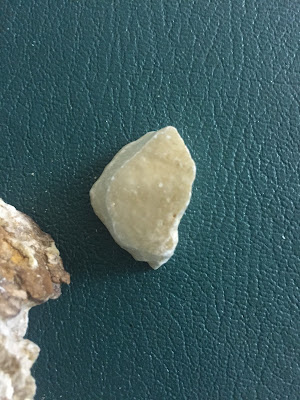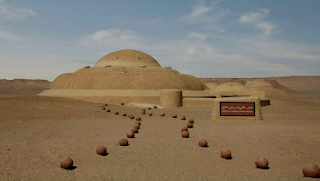A nummulite is a large lenticular fossil, subdivided by septa into chambers. Nummulites commonly vary in diameter from 1.2 cm to 5 cm and are common in Teritiary marine rocks - particularly around southwest Asia and the Mediterranean (limestones from Egypt).
The ancient Egyptians used nummulite shells as coins and the pyramids were constructed using limestone that contained Nummulites. It is not surprising then that the name "Nummulites" is a diminutive form to the Latin Nummulus meaning "little coin" a reference to their shape.
THE PYRAMIDS IN GIZEH WERE BUILT WITH NUMMULITES
Many of Egypt's most famous monuments, such as the Sphinx and Cheops, contain hundreds of thousands of marine fossils, most of which are fully intact and preserved in the walls of the structures, according to a new study.
The study's authors suggest that the stones that make up the examined monuments at Giza plateau, Fayum and Abydos must have been carved out of natural stone since they reveal what chunks of the sea floor must have looked like over 4'000 years ago, when the buildings were erected.
"The observed random emplacement and strictly homogenous distribution of the fossil shells within the whole rock is in harmony with their initial in situ setting in a fluidal sea bottom environment", wrote loans Liritzis and his colleagues from the University of the Aegean and the University of Athens.
The analysis determined the primary building material were "pinky" granites, black and white granites, sandstones and various types of limestones. The latter was found to contain "numerous shell fossils of Nummulites gen". At Cheops alone, they constituted a proportion of up to 40 percent of the whole building stone rock.
When horizontally bisected, a Nummulite appears as a perfect spiral. Since they were common in ancient Egypt, it's believed the shells were actually used as coins, perhaps explaining their name.
NUMMULITE of Fayoum oasis Egypt famous as (Qaroun piasters)
WEIGHT: different g
SIZE: different cm































.jpg)


